| Columns Retired Columns & Blogs |
Simaudio Moon Rock monoblock power amplifier Measurements
Sidebar 3: Measurements
I preconditioned the kilowatt Simaudio Moon Rock by running it at 300W into 8 ohms for an hour. After 30 minutes the chassis was warm but the heatsinks were too hot to touch, suggesting that they are smaller than required to pass the FTC heat test. However, this will be of little consequence in actual use. More important, the distortion level at this power output had hardly increased with the rise in temperature. Starting at 0.0028% with the amplifier cold, the distortion still measured only 0.0029% at the end of the preconditioning period.
The voltage gain into 8 ohms was the same from both the balanced and unbalanced input jacks, at 28.8dB, and neither input inverted absolute polarity. (The AES jack appears to be wired with pin 2 hot.) The input impedance was a reasonably high 25k ohms unbalanced and 50k ohms balanced over most of the audioband, these dropping a little at 20kHz, to 15k ohms unbalanced and 42k balanced. This should not be a problem with high-quality preamplifiers.
Despite its balanced topology, the Rock's output impedance was low, at 0.11 ohm in the bass and midrange, rising very slightly to 0.15 ohm at 20kHz. As a result, the modification of the amplifier's frequency response by the usual Ohm's Law interaction between this source impedance and that of the loudspeaker is small. This can be seen in fig.1, where the top trace shows the Rock's response into our simulated speaker load. It varies by just ±0.15dB. This graph also shows the amplifier's extended high-frequency response in balanced mode, which doesn't reach –3dB until 164kHz. The result was the same with unbalanced drive, giving rise to excellent reproduction of a 10kHz squarewave (fig.2).

Fig.1 Simaudio Moon Rock, balanced frequency response at 2.83V into (from top to bottom at 2kHz): simulated loudspeaker load, 8 ohms, 4 ohms, 2 ohms (1dB/vertical div.).
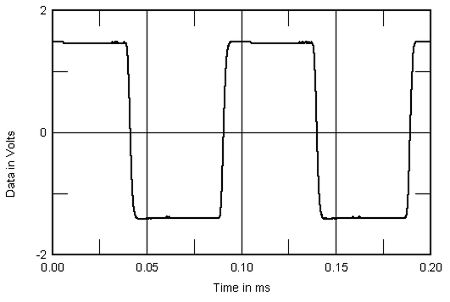
Fig.2 Simaudio Moon Rock, small-signal 10kHz squarewave into 8 ohms.
The Simaudio's signal/noise ratio was superbly low, at 84.9dB (unweighted, wideband, ref.1W into 8 ohms), this figure improving to 93.8dB when A-weighted. Given its very high maximum output power, this amplifier has enormous dynamic-range capability—better than 16-bit digital.
Fig.3 shows the THD+noise percentage in the amplifier's output as the output power rises from 100mW to the clipping level into loads ranging from 2 to 8 ohms. No fewer than 1080W are available into 8 ohms at the 1% THD+N point (30.33dBW), with 1.6kW available into 4 ohms (29dBW). The AC wall voltage had dropped from 125V to 119.1V at this point, so it's possible that the amplifier will give out even more power when fed from a regulated AC supply. With continuous drive into 2 ohms, the Rock's 12A fuse blew at 1.81kW (26.6dBW), which is why the trace in fig.3 stops before reaching the 1% line.
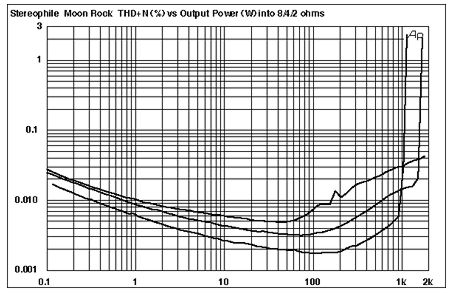
Fig.3 Simaudio Moon Rock, distortion (%)vs 1kHz continuous output power into (from bottom to top at 1W): 8, 4, and 2 ohms.
It can be seen from this graph not only that the Simaudio has very low noise but also that it offers very low levels of distortion at normal operating powers. Fig.4 plots the THD+N percentage against frequency at 9V into 8, 4, and 2 ohms. The rise in THD in the mid-treble and above is due to a decrease in the amplifier's open-loop gain margin, but there is still very little distortion evident. The content of this distortion is primarily third-harmonic in nature (fig.5). Though some higher-order harmonics are present (fig.6), these are still below –100dB (0.001%). At higher powers the third harmonic increases and the second makes an appearance (fig.7). But even at the very high continuous-output current at the power level featured in this graph, there are no traces of spuriae at power-supply frequencies, which is commendable. And even just below visible waveform clipping on an oscilloscope, the Moon Rock demonstrated very low levels of intermodulation distortion (fig.8).
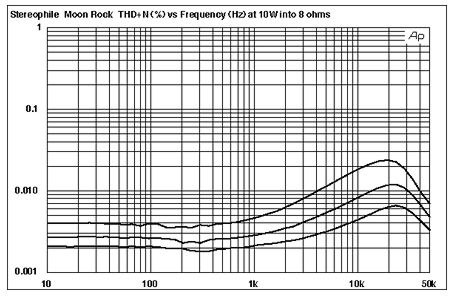
Fig.4 Simaudio Moon Rock, THD+N (%)vs frequency at 9V into (from bottom to top): 8, 4, and 2 ohms.
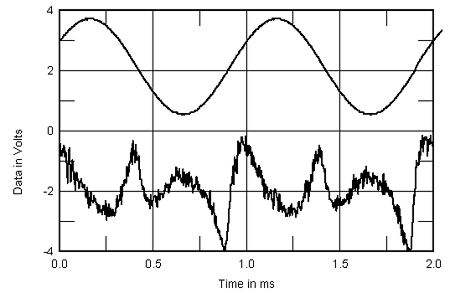
Fig.5 Simaudio Moon Rock, 1kHz waveform at 20W into 4 ohms (top), 0.0033% THD+N; distortion and noise waveform with fundamental notched out (bottom, not to scale).
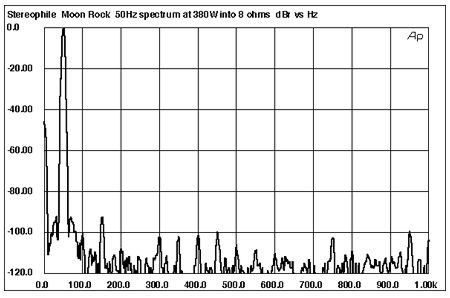
Fig.6 Simaudio Moon Rock, spectrum of 50Hz sinewave, DC–1kHz, at 380W into 8 ohms (linear frequency scale).
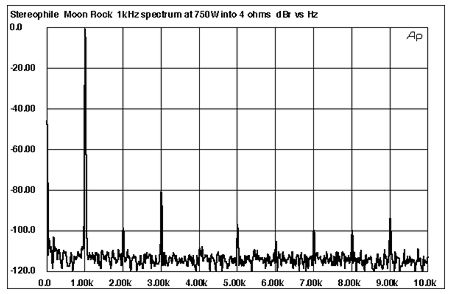
Fig.7 Simaudio Moon Rock, spectrum of 1kHz sinewave, DC–1kHz, at 750W into 4 ohms (linear frequency scale).
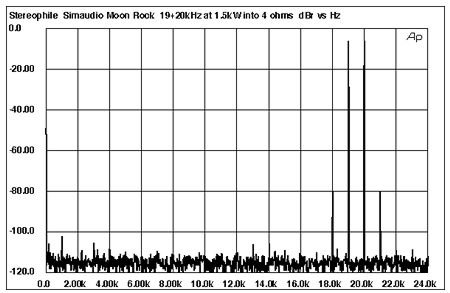
Fig.8 Simaudio Moon Rock, HF intermodulation spectrum, DC–24kHz, 19+20kHz at 1.5kW peak into 4 ohms (linear frequency scale).
Simaudio's Moon Rock offers both superb measured performance and enormous capabilities of dynamic range.—John Atkinson
- Log in or register to post comments




































